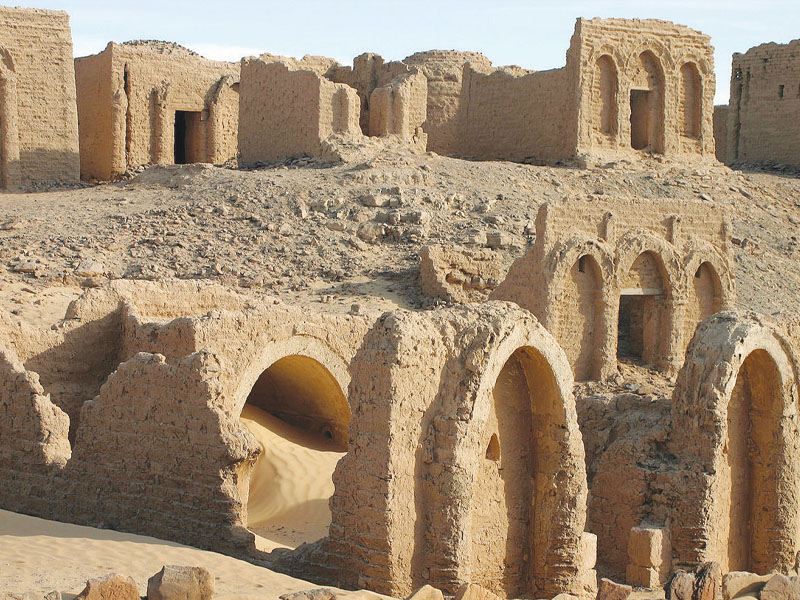Multi-Readings of Folkloric Texts: Egyptian Oases, Kharga Oasis and Al Bagawat Cemetery
Issue 44

Folklore texts are characterised by the flexibility with which they can be re-interpreted based on the symbols they reference. Due to this flexibility, these texts transcend historic, geographic and ideological boundaries. In Egypt, early Christians fleeing Roman persecution in Palestine used the Pharaohs’ tombs in Kharga Oasis as shelters, living separately from the inhabitants who followed an ancient Egyptian religion.
Until the 5th Century AD, Christianity was dependent on texts from the Old Testament that were reinterpreted from a Christian perspective. This is evident in Mazar Al Kharga’s paintings, which were inspired by the Old Testament. In the 5th Century AD, Christian art used symbolism, which included symbols of plants, animals and geometric symbols as seen in the work at Mazar Al Salam, Mazar Al Enab and at the basilica church.
This study attempts to answer the following questions:
• Why did the artist choose to depict scenes from the Old Testament rather than the New Testament in Mazar Al Kharga?
• How did the artist relate these stories and create a general theme about salvation? And where did he find this perspective on salvation?
1) How did he depict the concept of peace at Mazar Al Salam?
2) What are the Coptic symbols in Al Mazar 25, Mazar Al Enab and other mazars?
3) What are the architectural features of the old Coptic Church?
4) What is the relationship between Coptic Art and Egyptian folk arts?
The study will attempt to answer these questions through a historical analysis of myths and symbols, with a focus on the historic and mythical nature of the symbols used in the Mazars.
The study assumes that the concepts of salvation, peace, immortality and abundance in the paintings of the Coptic Al Bagawat cemetery take a new form that differs from the stories of the Old and New Testaments and is associated with ancient Egyptian ideologies, ancient Near Eastern civilisations and Egyptian folk culture.
Suzan Al Said
Egypt


































































